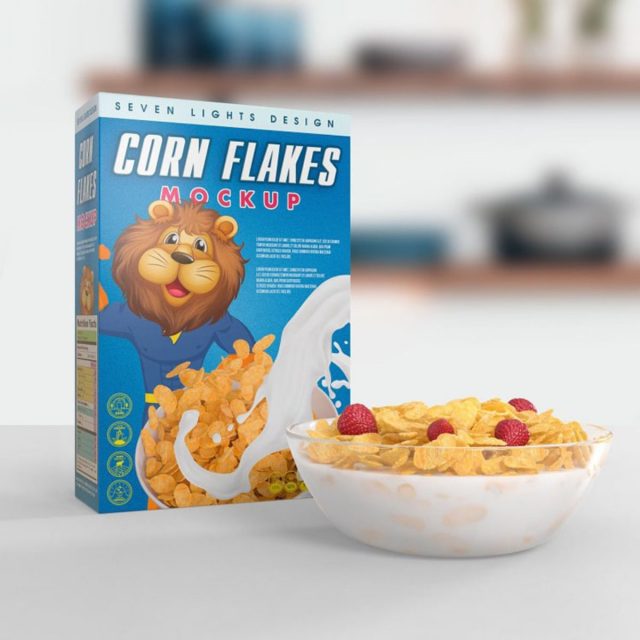Cereal boxes are a staple in many households worldwide, but have you ever wondered what goes into making them? In this blog, we’ll take a closer look at creating cereal boxes from start to finish.
The Initial Stage: Concept and Design
The first step in creating cereal box packaging is developing a concept and design. This includes deciding on the size and shape of the box, as well as the overall aesthetic. Next, the design team will work with the cereal manufacturer to create a concept that will appeal to the target market. This may include using bright colors and bold graphics to catch the consumer’s eye and retaining information about the cereal’s nutritional value and ingredients.
Size and Dimension
The size and dimension of the cereal box are also essential considerations. Colorful Cereal boxes come in various sizes and shapes, depending on the type of cereal and the target market.
For example, a box of children’s cereal may be smaller and have a more playful design, while a box of adult cereal may have a more sophisticated look. Therefore, the cereal manufacturer will also consider the amount of cereal included in the box and adjust the size accordingly.
Material Considerations
Kraft and cardboard are both commonly used materials for colorful cereal boxes. Kraft is a type of paper made from wood pulp known for its strength and durability. It is often used for packaging products that need to be shipped or stored for long periods.
- Cardboard
A cardboard is a thick, stiff paper made from multiple layers of Kraft paper. It is also sturdy and can make colorful cereal boxes that withstand weight and pressure.
- Kraft Paper
Kraft and cardboard are robust materials that withstand a lot of wear and tear. They are both very lightweight, making them easy to transport and store. Additionally, both materials are eco-friendly and biodegradable. Which makes them an ideal choice for packaging products that are intended to be disposed of after use.
- Corrugated Cardboard
On the other hand, corrugated cardboard is used for the inner layers, which provide structural support to the box. Corrugated cardboard is made of fluted or wavy paper sandwiched between two layers of liner paper. Which makes it much more robust than a single layer of paper.
Designing and Printing
Once the concept and design have been finalized, the next step is creating a print-ready version. This includes creating artwork and graphics, as well as laying out the text and other information that will be included on the box. Finally, the design team will work with printers to ensure that the final product looks as intended.
Lamination
After the custom cereal boxes have been printed, they may go through a lamination process. This involves applying a thin layer of plastic film over the printed surface of the box. This is useful for cereal boxes shipped to humid or tropical regions, where the high humidity could cause the cereal to become stale.
Exclusive Add-ons
Once the boxes are laminated, some manufacturers may add additional features to make their custom cereal boxes stand out from the competition. This could include adding a clear plastic window on the box, allowing consumers to see the cereal inside. Some colorful cereal boxes may also include special features such as a built-in spoon or measuring cup to make it more convenient for the consumer.
Another exclusive add-on is the use of special inks or techniques like UV printing, foil stamping, embossing, and debossing to make the cereal box more attractive, giving it a premium look. These techniques are used to enhance the visual appeal of the box and make it more eye-catching.
Another option is to include a special promotion or a game on the box. Such as a contest or a collectible series of stickers. This can be a great way to engage consumers and increase brand loyalty.
Quality Control
Before the cereal boxes are shipped to retailers, they undergo a final quality control process. This includes inspecting the boxes for defects or errors and checking that the cereal is fresh and of good quality. This step is crucial to ensure that the cereal boxes that reach consumers are of the highest quality and meet the manufacturer’s standards.
Final Stages: Manufacturing and Assembly
Once the design and layout have been finalized, the next step is manufacturing the cereal boxes. This includes cutting and shaping the paperboard or plastic sheets to the correct size and printing the design and other information onto the boxes. The boxes are then assembled by gluing or taping the sides together.
The final step is to fill the cereal boxes with cereal and seal them. The cereal boxes are then packaged and shipped to retailers, where they will be sold to consumers.
Conclusion
Overall, cereal boxes are made from various materials, and the design and manufacturing process is carefully planned and executed to ensure that the final product is visually appealing and functional. From concept and design to final assembly, each step is crucial in creating a cereal box that will stand out on store shelves and keep the cereal inside fresh and delicious.






